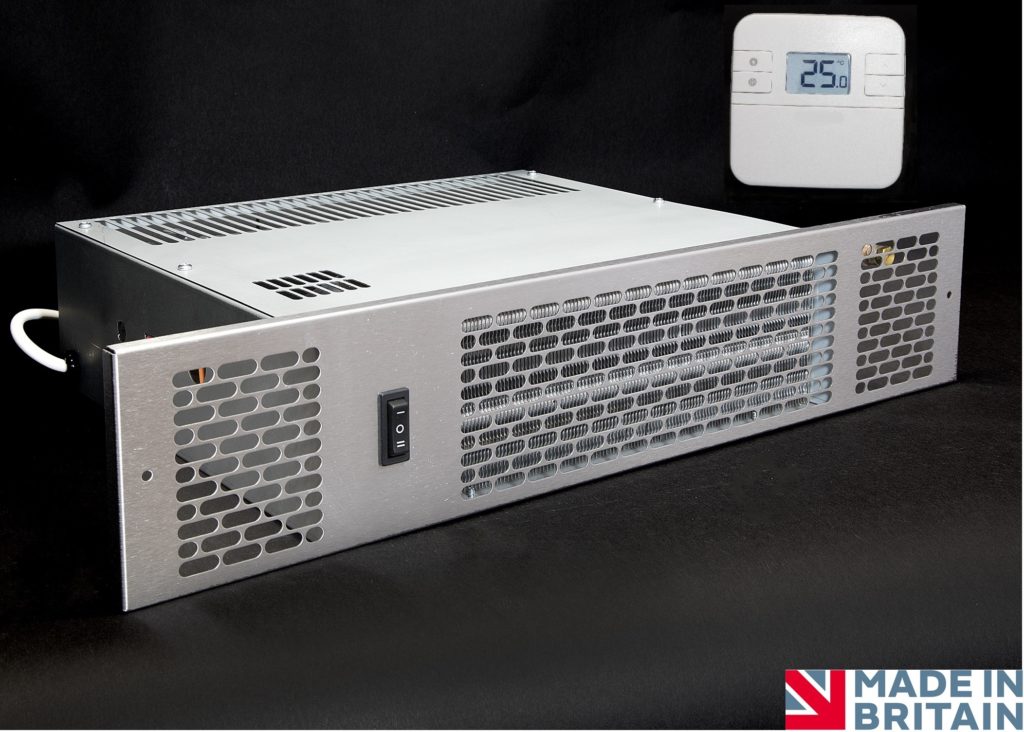Saving on space with a plinth heater
Jake Ambrose, technical director at Thermix, explains how space can be created by opting for a plinth heater in a kitchen rather than underfloor heating or larger radiator appliances.
As we know when it comes to the kitchen, every home owner likes to have more usable space. This may be for extra kitchen cupboards or worktop areas but the kitchen is already full so finding that valuable extra space may prove to be difficult.
Sometimes the only space available is where the radiator is fixed to the wall.
Once the radiator is removed to free up the space it brings another challenge as there now needs to be an alternative heating option installed to heat the kitchen.
Underfloor heating is one option, however the cost of installing this in the old existing kitchen could prove to be very expensive. The floor would need to be excavated, new insulation boards have to go down and the under floor heating pipes secured. The pipe loops are then connected to an appropriate manifold and finally the screed goes down.
Heat response is also slower compared to the radiator or a plinth heater as the under floor heating needs to warm the screed and flooring first before the heat starts rising into the room. These longer warm up period mean that retrofitting under floor heating to an existing system would need to be separately zoned correctly. This ensures existing pipework and radiators don’t heat up unnecessarily when the main home room stat is not calling for heat.
A much more cost effective solution is installing the hydronic plinth heater (fan-assisted radiator). This has become a great choice for home owners when either replacing kitchen radiators or planning a new kitchen. Plinth heaters can not only save space, they are so much cheaper to install compared to under floor heating.
Installing the wireless plinth heater is very simple compared to under floor heating as you only need to extend the existing pipework slightly and connect the plinth heater directly to your existing central heating system. There is need of electrical power supply to run the fan inside the plinth heater.
SMART APPROACH
A Thermix plinth heater that’s controlled by a wireless thermostat not only provides consistent temperature control in the kitchen, it also allows the user to set different on /off time periods to the plinth heater.
Customers also have the option of choosing from a simple wireless thermostat to a smart phone controlled thermostat. For larger kitchens multiple wireless plinth heaters can also be controlled by a single thermostat.
Thermix wireless plinth heaters models are available with 4 different heat outputs ranging from 1.5kW to 2.4 kW. We offer a choice of front grilles, including the popular brushed stainless steel version, and also a range of powder coated options in white, silver or black. We also offer a self-colour grille ready to paint for customers who want to colour match their plinth.
With the help of their low water content, plinth heaters provide faster heat response and leave much less residual heat when the heater turns off. This feature not only provides comfort heating to the user but also saves energy by not heating the room when not in use.

Please read the original article at Heating & Plumbing Monthly magazine. Click here
